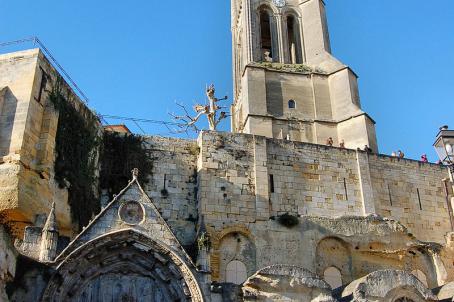Collegiate Church
Arriving in Saint-Emilion, the most imposing church that stands out in the upper town is the Collegiate Church. This is not a happy coincidence. The religious community installed within these walls between the 12th and 18th centuries, was a college of canons following the rule of Saint Augustine and embodying the official religious institution. As delegates of the Archbishop of Bordeaux, they ensured that the proper functioning of religious life in Saint-Emilion was respected. The size of the site is therefore a reflection of the importance of this community and its desire to mark its preponderance. The present Tourist Office occupies the premises of the former refectory of the community.
About this building
Built at the beginning of the 18th century for the community of canons of Saint-Augustin, its construction continued until the 16th century. It was listed as a Historic Monument in 1840. It has certain characteristics of the Perigordian Romanesque style, such as its two domes on pendentives that vault its second and third bays; however, most of the architectural elements visible today are related to the Gothic style. The church houses a statue of St. Valery, a local saint and protector of the wine growers, which is kept near the door of the sacristy. This statue, made of polychrome wood from the 16th century, possesses a certain precision of facial features and details rendered; his clothes and his serpe are the attire of the winegrowers of that time. The cloister of the 14th century forms a square of thirty meters square whose galleries are covered with a wooden frame. The groups of columns at the four corners of the gallery are surmounted by decorated capitals. Of the first cloister, built in the Romanesque period, only the east and south walls and openings remain, the rest of the monument having been rebuilt in the Gothic period.






